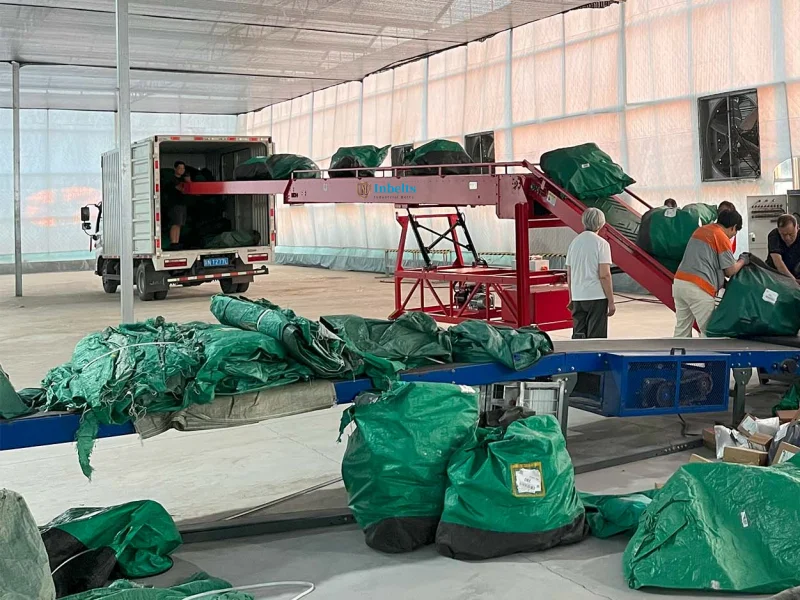
Telescopic Conveyor for Truck Loading
Truck loading is a critical process in logistics, manufacturing, and distribution industries. Traditional loading methods often involve manual labor, forklifts, or fixed conveyors, which can lead to inefficiencies, increased labor costs, and workplace injuries. Telescopic conveyors provide a flexible, efficient, and ergonomic solution for loading trucks, trailers, and containers by extending and retracting as needed to reduce manual effort and optimize workflow.
What is a Telescopic Conveyor?
A telescopic conveyor is an extendable belt conveyor or roller conveyor designed to to make loading/unloading of boxes, bags, cartons, parcels, or sacks faster and safer. It extends deep into the truck or trailer, allowing workers to place goods with minimal physical effort. When not in use, the conveyor retracts, saving space and improving operational efficiency.
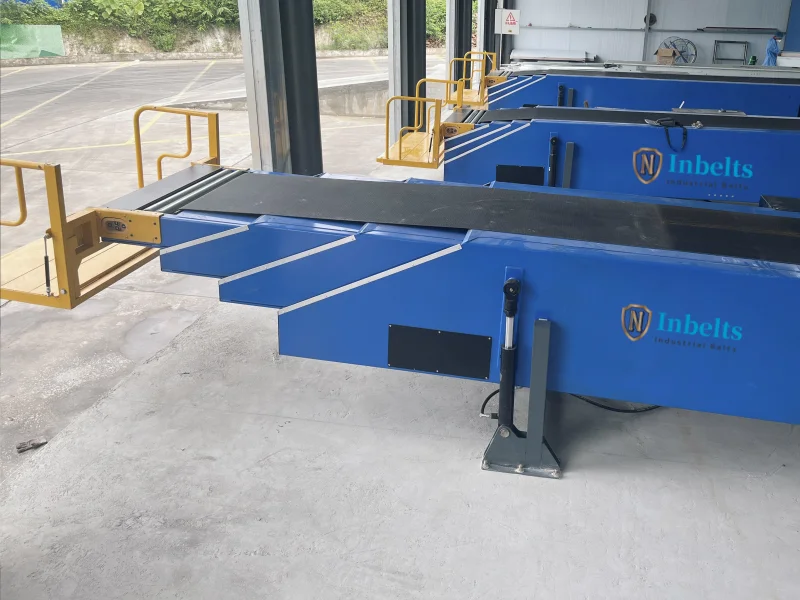
Types of Telescopic Conveyors
1. Telescopic Belt Conveyors
Extendable belt conveyors with chevron or smooth belts for handling bags, boxes, or loose items, ideal for high-throughput loading/unloading.
- Belt: PVC, rubber, or polyurethane, 600–1,200 mm wide; chevron for bags, smooth for boxes.
- Extension: 10–40 meters (2:1–4:1 ratio, e.g., 12–40 meters).
- Load Capacity: 1–100 kg per item; 1,000–3,000 items/hour (e.g., 50 kg bags or 20 kg boxes).
- Motor: 2–7.5 HP, 220V–400V, variable speed (10–60 m/min) via VFD.
- Height: Adjustable 0.5–12 meters, hydraulic or motorized.
- Best For: High-volume truck loading/unloading of bags, boxes, or parcels in distribution centers.
- Cons: Higher cost, complex maintenance ($10,000–$50,000 per unit).
2. Telescopic Roller Conveyors
Extendable roller conveyors relying on gravity (1–5° incline) or manual push, suitable for lighter boxes or bags with flat bases.
- Rollers: 1.5"–2.5" diameter, steel or plastic, 2"–4" spacing.
- Extension: 8–24 meters (3:1 ratio, e.g., 8–24 meters).
- Load Capacity: 1–50 kg per item; 200–600 items/hour.
- Height: Adjustable 0.5–3 meters, manual or hydraulic.
- Best For: Small to medium warehouses, low-cost loading of lightweight boxes.
- Cons: Higher cost than gravity, less suited for heavy bags ($7,000–$20,000 per unit).
3. Telescopic Gravity Conveyors
Extendable roller conveyors with motorized rollers (MDR) or belt-driven systems for controlled movement of boxes or bags.
- Rollers: 1.9"–2.5" diameter, steel, with 24V–48V DC motors or belt drive.
- Extension: 10–30 meters (3:1 ratio).
- Load Capacity: 10–100 kg per item; 600–1,500 items/hour.
- Motor: 1–3 HP, 220V–400V, or 24V DC (MDR); speed 10–50 m/min.
- Height: Adjustable 0.5–6 meters, hydraulic or motorized.
- Best For: Automated loading/unloading of boxes or medium-weight bags in e-commerce or logistics.
- Cons: Limited capacity, not suited for heavy bags or automation ($2,000–$10,000 per unit).
4. Automated Telescopic Conveyors
Belt or roller conveyors with sensors, PLCs, or robotic integration for fully automated loading/unloading, often with WMS connectivity.
- Belt/Rollers: Chevron belt (600–1,200 mm) or 1.9"–2.5" rollers.
- Extension: 12–40 meters.
- Load Capacity: 1–100 kg per item; 1,500–3,000 items/hour.
- Controls: PLC, photoelectric sensors, or robotic arms; 220V–440V.
- Height: Adjustable 0.5–12 meters, hydraulic.
- Best For: High-throughput distribution centers or e-commerce hubs with automated workflows.
- Cons: High cost, complex setup ($20,000–$100,000+ per unit).
Key Features of a Telescopic Conveyor
- Extendable Boom: Extends 2:1–4:1 ratio to reach deep into trailers. Retracts and expands into the truck up to 8–20 meters.
- High Load: Handles 1–100 kg per item; up to 1,000–3,000 items/hour.
- Height-Adjustable: Tilt or lift mechanism to match truck bed level.
- Powered Belt Movement: Smooth and controlled transfer of packages.
- Mobile Base: Wheeled chassis with lockable casters, tyres or towbars for repositioning. Easily moves around the warehouse or loading dock.
- Operator Controls: Supports sensors, PLCs, or integration with warehouse management systems (WMS). Push-button or joystick for belt speed, extension, and height.
- Optional Lighting & Cameras: Improves visibility inside the truck/container.
- Heavy-duty Frame: Typically mild steel powder-coated for durability.
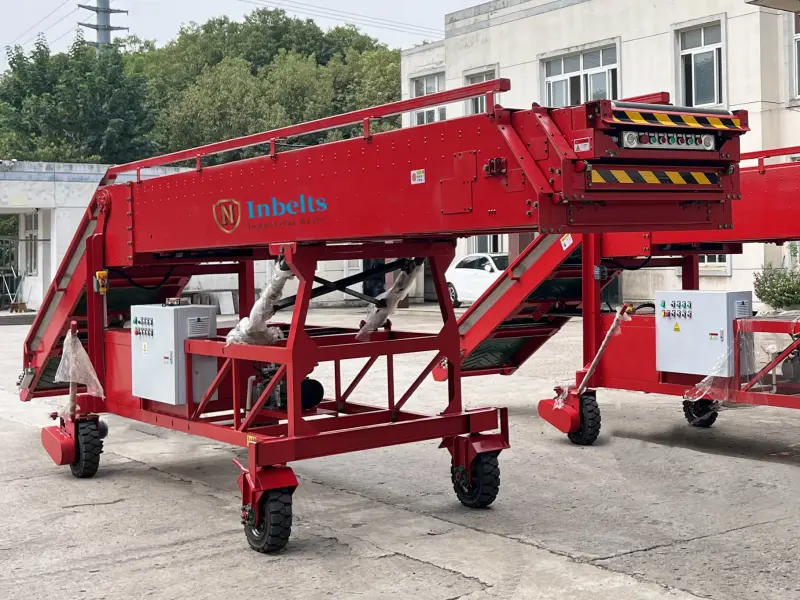
The Working Principle of a Telescopic Belt Conveyor for Truck Loading
1. Positioning and Alignment
The telescopic conveyor is first positioned at the truck dock or loading bay. Proper alignment ensures seamless material flow, reducing manual effort and increasing loading efficiency. Some systems are equipped with sensors or automated positioning technology to enhance accuracy.
2. Extension into the Truck
Once aligned, the telescopic boom conveyor can extend into the truck or container. This allows the conveyor belt to reach deep inside, eliminating the need for manual carrying or forklifts. The extension length can be adjusted based on the truck size and cargo type.
3. Material Loading and Transfer
Bulk materials, packages, or other goods are placed onto the conveyor belt at the feeding point. The belt transports the materials smoothly into the truck, ensuring controlled and even loading. Adjustable speed settings allow operators to optimize the loading process based on package weight and volume.
4. Retraction for the Next Operation
Once loading is complete, the telescopic conveyor retracts back to its original position, making space for the next truck. Some models come with powered height adjustment to accommodate different vehicle heights, further enhancing efficiency.
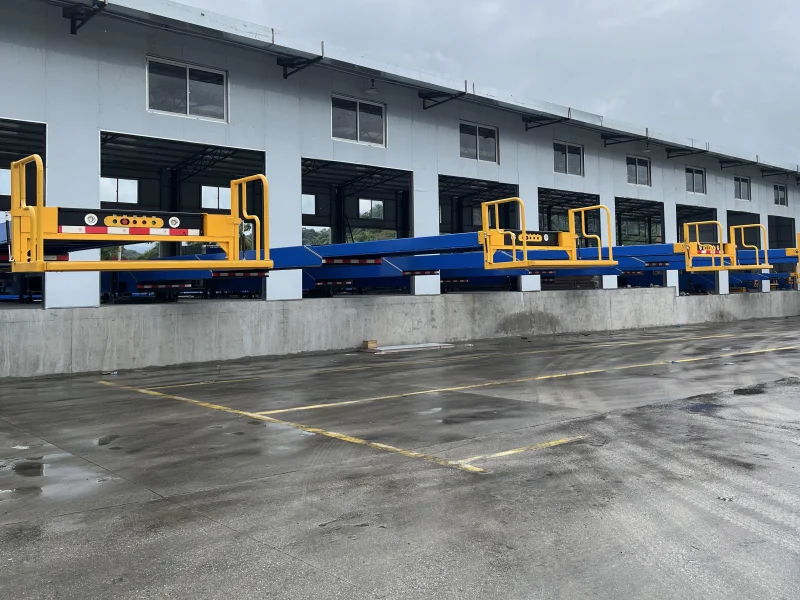
Applications of Telescopic Conveyors
- Warehouses & Distribution Centers: Improves loading/unloading speed.
- E-commerce & Retail Logistics: Handles high volumes of parcel shipments.
- Freight & Transportation Hubs: Enhances efficiency in supply chain operations.
- Manufacturing Facilities: Moves raw materials and finished products.
Advantages of Using a Telescopic Conveyor for Truck Loading
- Increased Efficiency: Reduces truck loading time by up to 50% compared to manual methods.
- Lower Labor Costs: Minimizes reliance on manual labor and forklifts.
- Ergonomic Design: Reduces worker fatigue and risk of musculoskeletal injuries.
- Space-Saving: Retractable design conserves warehouse space.
- Cost Savings: Lower operational expenses by reducing material handling inefficiencies.
Comparison: Telescopic Conveyor vs. Traditional Truck Loading Methods
| Feature | Telescopic Conveyor | Manual Loading | Forklifts | Non-Telescopic Conveyor |
| Efficiency | ✅ High | ❌ Low | ✅ Moderate | ✅ Moderate |
| Labor Requirement | ✅ Low | ❌ High | ❌ High | ✅ Medium |
| Loading Speed | ✅ Fast | ❌ Slow | ✅ Moderate | ✅ Moderate |
| Cost Savings | ✅ High | ❌ High | ❌ High | ✅ Moderate |
| Safety | ✅ Safe | ❌ High risk | ❌ Forklift-related hazards | ✅ Safe |
How to Select the Right Telescopic Conveyor for Truck Loading
- Extension Length: Total boom extension length required to reach into the truck/container.
- Conveyor Width: Typically 600–1000 mm for most standard parcel sizes.
- Conveyor Speed: Adjustable speed up to 30–60 m/min for different products.
- Loading Capacity: Light-duty (~50 kg/m) vs. heavy-duty (~100 kg/m) belt strength.
- Mobility & Power Source: Choose between fixed, wheeled, or rail-mounted units; powered by mains or battery.
- Height Adjustability: Hydraulics or manual crank to match truck dock height.
- Optional Features: Bumpers, impact rollers, anti-collision sensors, safety railings, lighting.
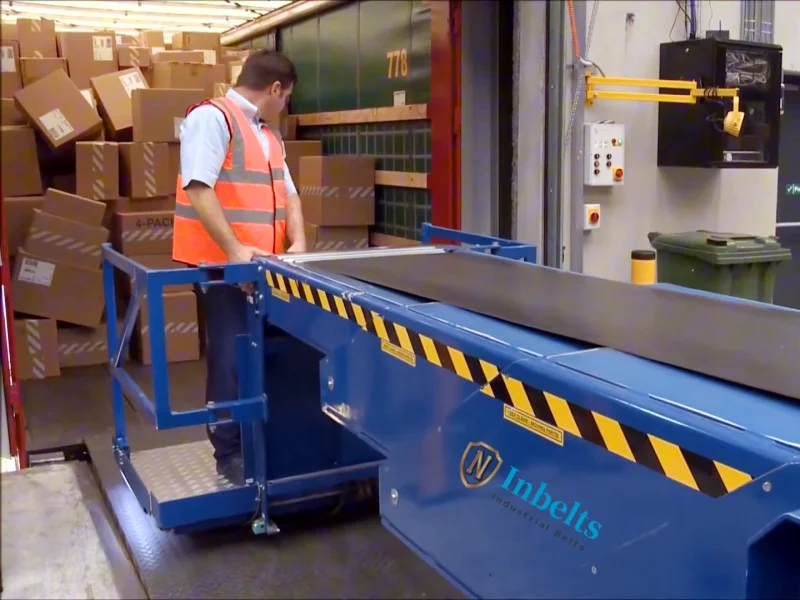
FAQs About Telescopic Conveyors for Truck Loading
1. What is the maximum reach of a telescopic conveyor?
Most extend 10 to 20 meters into a truck or trailer.
2. Can telescopic conveyors handle heavy loads?
Yes, some models support up to 100 kg per meter.
3. Are telescopic conveyors mobile?
Some models feature wheels or tracks for repositioning.
4. What industries benefit most from telescopic conveyors?
Logistics, e-commerce, manufacturing, and warehouse operations.
Telescopic conveyors for truck loading are highly efficient, extendable systems for handling bags (25–100 kg), boxes (1–50 kg), or parcels, with belt ($10,000–$50,000), gravity roller ($2,000–$10,000), powered roller ($7,000–$20,000), or automated ($20,000–$100,000+) options. Would you like a technical specification or help sizing the conveyor for your warehouse or truck size? Let me know the details like container length, weight of packages, and load rate — I'll help you with the exact model and configuration!


Leave Me Your Requirement!